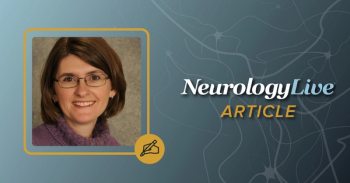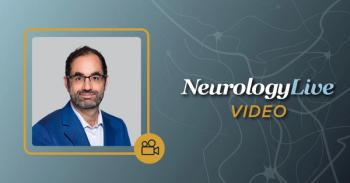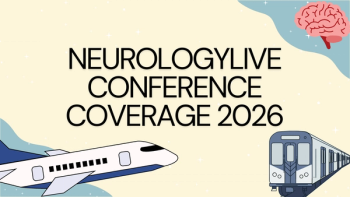
Addressing Stigma in Epilepsy and Directing Future Research
Following the publication of 2 reviews from the International League Against Epilepsy Task Force on Stigma in Epilepsy, Joan K. Austin, PhD, RN, FAAN, spoke on the need to better understand this issue and address it in clinical practice.
This is 2-part interview. To view part 1,
Stigma is a persistent concern in epilepsy, affecting different facets of life, and with nearly 1 in 3 patients reporting that it is a bigger issue for them than seizures. Stigma can also have ramifications in the form of noncompliance and lack of adherence to medication, as some patients with epilepsy may not want to disclose their disease status or take their prescriptions in front of others.
Two recent systematic reviews were conducted by the International League Against Epilepsy Task Force on Stigma in Epilepsy, one focusing on felt and enacted stigma, and another evaluating screening instruments and interventions to address this stigma. The latter identified a major gap in literature, as there is a glaring lack of intervention programs to address stigma in patients with epilepsy.1,2
Joan K. Austin, PhD, RN, FAAN, Distinguished Professor Emerita, Indiana University School of Nursing, sat down with NeurologyLive® to discuss these publications, sharing her perspective on areas that clinicians need to better understand, as well as strategies for addressing stigma in practice. Future research, she said, should be in establishing intervention programs that take feedback from patients into consideration, which will then need to be evaluated in clinical trials.
NeurologyLive®: What do clinicians need to better understand about stigma in epilepsy? How can they actively address them in practice?
Joan K. Austin, PhD, RN, FAAN: I would say there are 2 things that clinicians need to keep in mind.One, that they need to realize that stigma is common in people with epilepsy; and second, that many of their patients will experience stigma, regardless of whether they mention it or not. For many patients, they say 1 in 3, stigma will be more of a problem than the seizures. Second is that stigma can have negative consequences for patients. It can lead to the psychosocial and quality of life problems of anxiety, depression, poor academic achievement, and unemployment. The perceptions of stigma might also lead patients to not disclose to others that they have epilepsy, and they might not want to take their medication in front of other people. For example, children may not want to take their medication at school, or if they're on an overnight, or if they're camping. So, stigma can have implications on noncompliance or lack of adherence to a treatment regime.
So how can they address it? The first thing that [clinicians] need to do is just to assess it, and that's something that's very important for them to do, is assess stigma in the clinical setting. It could be as simple as asking or saying, 'Many people with epilepsy have concerns about others treating them differently or being uncomfortable around them because of their seizures. Is this something you're experiencing?' Another way would be to use one of the tools described in the paper—there's a 3-item scale, that simply asked whether the person with epilepsy feels that people were uncomfortable with them, if they were feeling like they were being treated as inferior, or if they were feeling like others preferred to avoid them. This would be a real simple tool to administer in the clinical setting to get a quick assessment of stigma. Providers also need to assess problems that are associated with stigma, to look for the mental health problems, the academic, and the vocational problems.
The next step would be addressing it. The literature shows really strongly that patients who are more knowledgeable about epilepsy, and patients who feel the most confident in their ability to handle their seizures, have the least stigma. Therefore, that's a good place to begin is educating patients and their families about epilepsy and how to manage it. For example, patients can be given educational materials, or list of websites—they can also just help families and patients identify resources in the community. Very often, there's a local epilepsy foundation our affiliate that they can refer them to, and they can also help them become aware of resources in the community. For problems such as academic achievement, or employment problems, or mental health problems, they can make referrals for academic testing, vocational rehab, or psychiatry, as appropriate.
What issues pertaining to stigma still need to be addressed, and how can they be? What future research is needed?
At the end of the review, we all agreed that the major gap in the literature is the lack of intervention programs to help reduce stigma, especially for patients with epilepsy. But it's also important [to note] that we need programs for children, we need them for adults, we need programs for thegeneral public—to help educate them about epilepsy for families—and also for professionals, teachers, clergy, and health care providers. All these programs are needed, and they need to be developed by taking the target audience into consideration and getting feedback from them in the development of the program so we can make them fit the audience.
Then once they're developed, they need to be tested in clinical trials to see how well they work. This is the major area where scientists need to focus on in stigma. We have a lot of studies showing the associations, and we have good instruments to use. As we move forward in the field, it would be great if we could develop interventions, using instruments that are pretty well developed already to test them and be able to find out what really works in the real world to help people who are dealing with epilepsy and stigma.
Is there anything else you would like to add?
I think there's always room for a population that hasn't been studied, or to better understand stigma and a specific population, to make sure that the answer that the intervention program that you're developing is relevant for that population. But we really just need to move the field forward to interventions, and away from more descriptive work, of just saying, 'What are the problems?' We really have a lot of [literature to] support what problems stigma causes, but we don't have the programs, and we don't know how to intervene to help reduce those problems.
Transcript edited for clarity.
REFERENCES
1. Kwon, C, Jacoby A, Ali A, et al. Systematic review of frequency of felt and enacted stigma in epilepsy and determining factors and attitudes toward persons living with epilepsy—Report from the International League Against Epilepsy Task Force on Stigma in Epilepsy. Epilepsia. Published online January 5, 2022. doi:10.1111/epi.17135
2. Austin JK, Birbeck G, Parko K, et al. Epilepsy-related stigma and attitudes: Systematic review of screening instruments and interventions - Report by the International League Against Epilepsy Task Force on Stigma in Epilepsy. Epilepsia. Published online January 5, 2022. doi:10.1111/epi.17133
Newsletter
Keep your finger on the pulse of neurology—subscribe to NeurologyLive for expert interviews, new data, and breakthrough treatment updates.




























